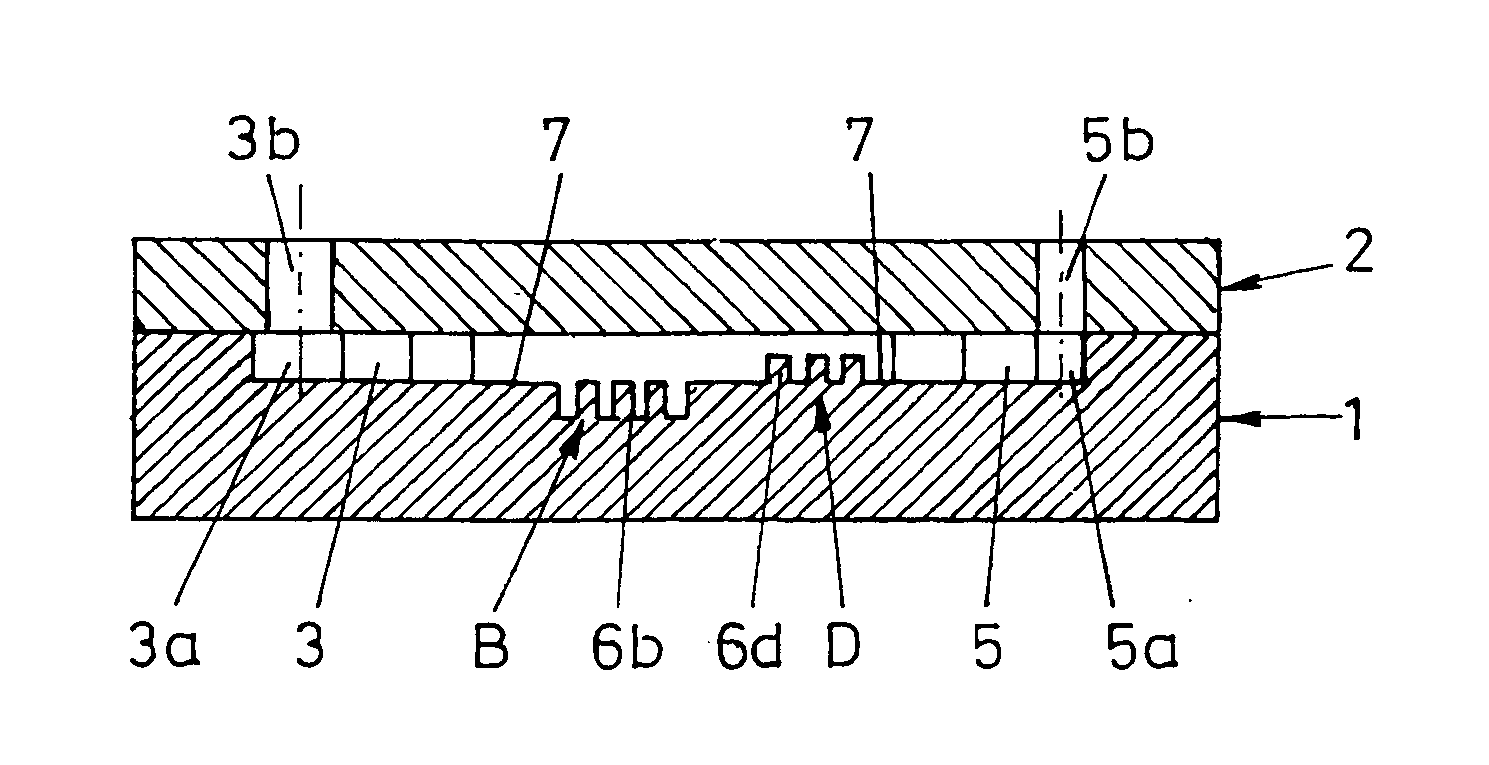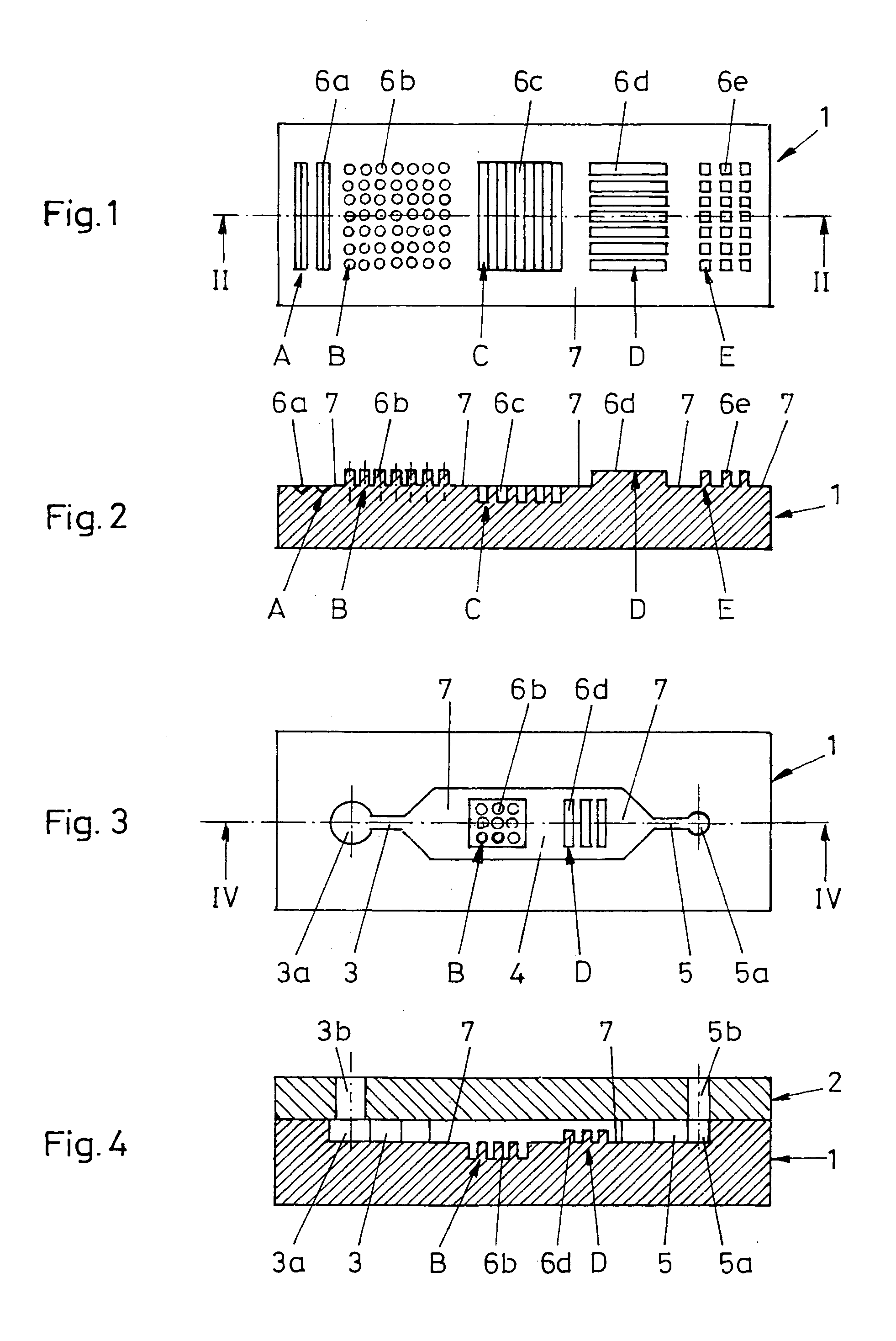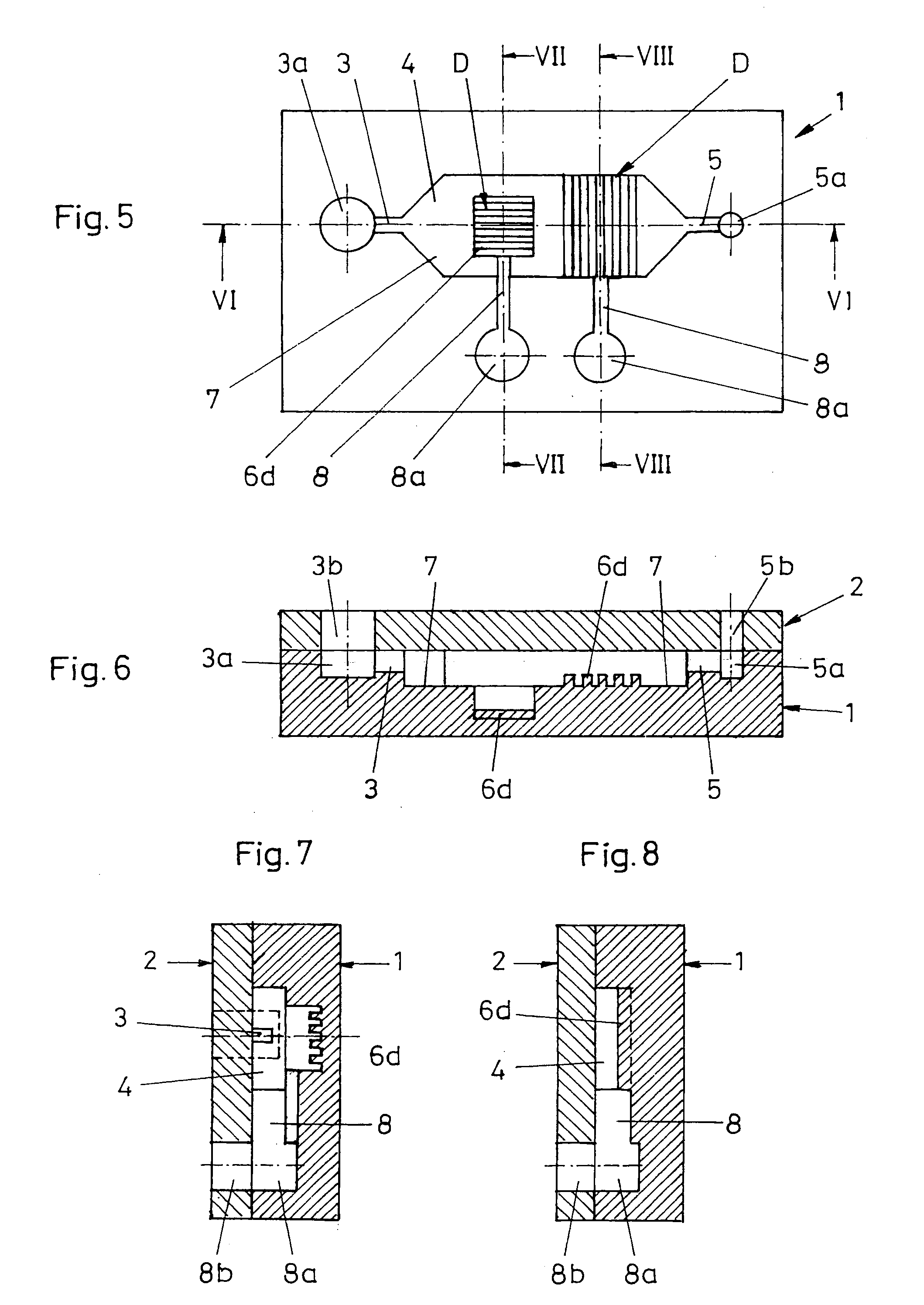Device for the manipulation of limited quantities of liquids
a technology for manipulating liquids and liquids, applied in the direction of instruments, electrical equipment, nanotechnology, etc., can solve the problems of difficult to precisely specify the acting capillary force, small amount of liquid which can be stored in the surface area, and inconvenient operation of the device,
- Summary
- Abstract
- Description
- Claims
- Application Information
AI Technical Summary
Benefits of technology
Problems solved by technology
Method used
Image
Examples
example 2
[0071] Immobilization of Streptavidin
[0072] To immobilize streptavidin the microstructured first surface areas of the microchip according to example 1 are coated with streptavidin. To do this, by means of a laboratory dispenser (GeSiM) 0.1 μl streptavidin solution (1μg / ml in 0.1 M phosphate buffer, pH 7.0) is applied to the individual microstructured first surface areas and dried up. Then the excess, unbound streptavidin is removed by washing with 0.1 M phosphate buffer, pH 7.0. In order to increase the amount of streptavidin bound to the surface, the first surface areas before spotting can be functionalized by for example plasma processes such as plasma polymerization or wet-chemical processes.
[0073] For analysis purposes the fluorescein-biotin sample is applied to the entire chip surface in different concentrations (1.0 μM in PBS) and removed by a washing buffer after an incubation time of 30 seconds. The chip can then be optically measured under a fluorescence microscope or flu...
example 3
[0074] Production of an Antibody Microarray
[0075] In an antibody microarray antibodies in high density are applied to the first surface areas of the plastic plate (solid) and immobilized. The plastic plate is connected after immobilization of the antibodies to a second plastic plate with a channel structure (channel plate) so that via its channel structure from the outside liquids can be routed over the first surface areas. For detection of antigens in the sample liquids, to do this the sample (for example, cell lysate) is routed via the inlet and the channel structure into a reaction chamber 4 and its first surface areas. After a defined time interval the sample is removed from the reaction chamber by applying a washing solution. The bound antigen can be detected by supplying a suitable indicator solution.
example 4
[0076] Enzymatic Determination of Infectious Diseases in Urine Samples
[0077] The individual first surface areas (spots) within the reaction chamber contains reagents for enzymatic detection of leukocytes, nitrite, albumin, occult blood and creatinine. In the presence of the corresponding analysis targets in the liquid sample a color change takes place in the test areas and it can be analyzed as in a test strip with the naked eye and color scale or with photometric tests.
PUM
 Login to View More
Login to View More Abstract
Description
Claims
Application Information
 Login to View More
Login to View More - R&D
- Intellectual Property
- Life Sciences
- Materials
- Tech Scout
- Unparalleled Data Quality
- Higher Quality Content
- 60% Fewer Hallucinations
Browse by: Latest US Patents, China's latest patents, Technical Efficacy Thesaurus, Application Domain, Technology Topic, Popular Technical Reports.
© 2025 PatSnap. All rights reserved.Legal|Privacy policy|Modern Slavery Act Transparency Statement|Sitemap|About US| Contact US: help@patsnap.com



